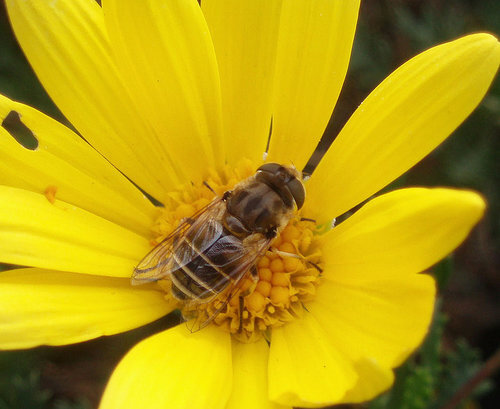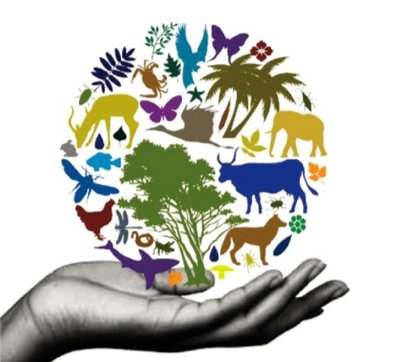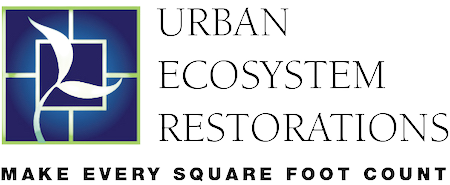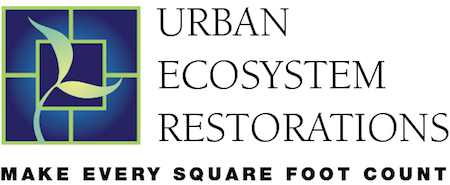by Rachel Toker, President & CEO of Urban Ecosystem Restorations
In the first blog of this series, I wrote about John Lewis’s call to each of us to replace a legacy of domination with a legacy of everlasting love.
To succeed, we must examine how we develop relationships with Others – human and non-human, as individuals and as communities.
A legacy of everlasting love demands that we approach what we don’t understand – the Other – with openness, respect, and curiosity. In relationships with Others that are informed by love, we are willing to learn new ways, see what makes them special, share and trade without depleting or degrading, and repair past injury.
The Natural World as the Other
The vast majority of modern societies, including the United States, have approached the natural world as Other with a lens of social dominance rather than love. In the U.S., we have taken this approach at every scale, from the national level down to individually owned pieces of property.[1] As a result, we have contributed mightily to the global destabilization of Earth systems, moving many of them outside of a “safe operating space” even though they are necessary preconditions for life on Earth as we know it (Steffen et al., 2015).
Whoever we are, wherever we sit, each of us relies on Earth’s systems to survive and thrive. And experts know that only healthy ecosystems deliver the full suite of services we need and want. Yet most urban dwellers don’t realize all the ways every one of us needs these Earth systems or understand how they work. Libraries are filled with descriptions of the myriad ways our fates are deeply intertwined, yet we don’t know or don’t care what nature needs to flourish.
Respecting the Internal Workings of the Natural World
To reverse our collective legacy of destruction and approach this Other with openness, respect, and a recognition that we must repair our relationship, we must first understand and respect the intricate internal relationships of healthy ecosystems: from plant-soil-insect relationships to food webs to the role of keystone species to the internal systems of checks and balances that enable them to self-regulate. Biodiversity drives the engine that keeps ecosystems operating (Ceballos et al., 2017, Christensen et al., 1996, Dyer et al., 2010): claiming to respect an ecosystem without fostering biodiversity is like trying to heal a body while removing its beating heart.
Two simple examples, among many thousands, occur at the smallest of scales:

· Macroinvertebrate and mycorrhizal life produce healthy, organic soils, which in turn produce healthy trees and forests and provide the soil porosity necessary for stormwater management and water infiltration. These processes in turn manage flooding and allow for groundwater recharge.
· Pollinators rely on specific sets of native plant species for their life cycles. Bees pollinate a third of our crops and are largely responsible for pollinating 87 percent of all plants and 90 percent of all angiosperms, so if pollinators disappear, 87 to 90 percent of the plants on planet Earth would also (Nature’s Best Hope, n.d.).
These interactions barely scratch the surface of what happens all around us daily…outside of our conscious awareness. We have to learn and recognize these many connections within the Other so that we can learn how to respect and heal it. As we respect these connections within the Other, we will better understand the connection between the Other and ourselves – and to all life on Earth. It is time that we do this, for our own sake as well as theirs.
“Biodiversity drives the engine that keeps ecosystems operating
Returning Ecosystems to Health
Local ecosystems are communities. Like human communities, when they are healthy, they are complex, highly diverse, highly interactive,[2] and resilient in the face of normal disturbance levels (Christensen et al., 1996). To be resilient, ecosystems need: landscape connectivity, biological diversity, and refuge areas available for species to protect themselves in the face of predators and natural disturbances (Timpane-Padgham et al., 2017). We also know that land area, or “patch size,” must be large enough to house high levels of plant and animal diversity. And we know that habitat ranges have been shrinking in ways that have resulted in mass extinctions all over the world, including in the United States (Ceballos et al., 2017). Restoring the land area for necessary habitat range can be achieved through aggregation of lands; it does not have to occur under a single landowner (Nature’s Best Hope, n.d.).
If we care about the natural world and we consider what makes an ecosystem healthy at a regional level, then we know that metropolitan areas CANNOT remain ecological black holes – gaping lost landscapes to the larger ecosystems in which they are a part (Aronson et al., 2017).

City regions must take their place within the fabric of ecological continuity that regional ecosystems need to operate.[3] Ecosystems need more space within metropolitan areas to return larger regional systems to health (Andersson et al., 2014).
Local ecosystem restoration is also essential because ecosystems deliver certain benefits only within short distances from the ecosystem itself (e.g., air quality and flood management, among others). Therefore, we should not discount the importance of healthy local ecosystems to people, even as we seek to protect and restore the planet’s largest remaining ecosystems elsewhere.
As urban land area for ecosystems grows, not only will ecosystems thrive, but people can more equitably experience their benefits. The benefits of nature are not just for the rich or just for the poor, or just for one racial or socio-economic community – nor can ecosystems survive in such spatially fragmented and radically constrained ways. For ecosystem and equitable public health to succeed together, they must be present for everyone, every day – and this requires making room for them EVERYWHERE – in every neighborhood and every district.
“City regions must take their place within the fabric of ecological continuity that regional ecosystems need to operate.
“The benefits of nature are not just for the rich or just for the poor, or just for one racial or socio-economic community – nor can ecosystems survive in such spatially fragmented and radically constrained ways
Your Power at the Local Level
Global trends, statistics, and warnings can feel far away. Somewhere else. The United Nations, global summits, Paris protocols…. someone out there is handling these problems, right? Well… yes and no. Truly addressing the scope of this problem calls for both public and private action at every scale.
Whether you negotiate global environmental protections at work, you’re an administrative assistant, an account executive for a computer company, a stay-at-home parent, or anything else, each of us has a job to do for natural ecosystems.
Certainly, local governments have a role that they should not abdicate. They should create and protect green infrastructure networks across their jurisdictions and ensure that urban development leaves room for natural systems to regenerate and restore ecosystem functions to their regions. Governments can require green area ratios to preserve land area for nature equitably across cities rather than permitting ubiquitous impervious cover. These tools are needed to lay the groundwork for private citizens to do their work.
But each of us must do our part too – the repair of whole ecosystems cannot be accomplished by a team of scientists or a group of government regulators. Each one of us must take our place in the movement to restore these life-giving systems and the interactions necessary for them to operate.
Doug Tallamy, noted Professor of Entomology at the University of Delaware, argues that, with a massive movement to restore suburban yards – and, I would add, most urban green space – to ecological function (abandoning our familiar grassy lawns and hardscapes for native habitat), we can create cascading effects that may stop our current ecological freefall (Nature’s Best Hope, n.d.).[4] We can act collectively to repair the damage we have done to this Other, and, in turn, to ourselves. Yes, right in your back yard or at your office’s courtyard or at your neighborhood park – you can restore part of the Beloved Community and approach this Other in a new way… a better way.
What can you do?
· First, you can lobby civic and political leaders to incorporate biodiversity and ecosystem thinking into urban plans and urban development regulations. Encourage them to figure out how to configure urban density to make room for ecosystems and ecosystem connectivity.
· Second, you can make sure that the urban greenspaces you own or enjoy maximize ecosystem health and complexity – both in terms of plant choices (i.e., select native plants that support as many species as possible) and structure (i.e., create vertical structure that mirrors native habitat structure). Certify your yard as wildlife habitat. Use the tools at these hyperlinks to choose your plants: The National Wildlife Federation and the National Audubon Society. And refrain from using pesticides and fertilizers on your property.
· Third, ask real estate developers and corporate citizens to design their buildings to improve ecosystem health and landscape connectivity. Encourage them to implement regenerative design; share this article with them: The Nature of Positive.
If you need help, contact us. Urban Ecosystem Restorations was formed to help people see these Others through new eyes. We are here to help you learn what you need to know and act to repair the damage each of us has participated in, whether wittingly or unwittingly.
Conclusion
It is long past time for us to act. Those of us who are builders of cities, along with the rest of us who have bent nature to our own ends past its breaking point, must act because we have inflicted such profound damage that only stopping further damage is not enough.
And we must heal nature everywhere – in the places that have suffered the most extreme damage as well as in the places that have still managed to hang on. We must nurse our global ecosystem back to health – local system by local system. As we work together to repair the damage of the past and save ourselves, we just might discover a deep sense of awe as we experience the amazing complexity and intricacy of nature’s system operations.
Let John Lewis’s words guide our steps and actions toward all communities in our land. Particularly those we have injured, failed, disrespected, and killed. Particularly those in need of healing and protection due to our failures in thoughts and deeds. For human and non-human Others alike – in our own yards and across the country.
Sources
Alig, R. J., Plantinga, A. J., Ahn, S., & Kline, J. D. (2003). Land use changes involving forestry in the United States: 1952 to 1997, with projections to 2050. (PNW-GTR-587; p. PNW-GTR-587). U.S. Department of Agriculture, Forest Service, Pacific Northwest Research Station. https://doi.org/10.2737/PNW-GTR-587
Andersson, E., Barthel, S., Borgström, S., Colding, J., Elmqvist, T., Folke, C., & Gren, Å. (2014). Reconnecting Cities to the Biosphere: Stewardship of Green Infrastructure and Urban Ecosystem Services. AMBIO, 43(4), 445–453. https://doi.org/10.1007/s13280-014-0506-y
Aronson, M. F., Lepczyk, C. A., Evans, K. L., Goddard, M. A., Lerman, S. B., MacIvor, J. S., Nilon, C. H., & Vargo, T. (2017). Biodiversity in the city: Key challenges for urban green space management. Frontiers in Ecology and the Environment, 15(4), 189–196. https://doi.org/10.1002/fee.1480
Ceballos, G., Ehrlich, P. R., & Dirzo, R. (2017). Biological annihilation via the ongoing sixth mass extinction signaled by vertebrate population losses and declines. Proceedings of the National Academy of Sciences, 114(30), E6089–E6096. https://doi.org/10.1073/pnas.1704949114
Christensen, N. L., Bartuska, A. M., Brown, J. H., Carpenter, S., D’Antonio, C., Francis, R., Franklin, J. F., MacMahon, J. A., Noss, R. F., Parsons, D. J., Peterson, C. H., Turner, M. G., & Woodmansee, R. G. (1996). The Report of the Ecological Society of America Committee on the Scientific Basis for Ecosystem Management. Ecological Applications, 6(3), 665–691. https://doi.org/10.2307/2269460
Dyer, L. A., Walla, T. R., Greeney, H. F., Iii, J. O. S., & Hazen, R. F. (2010). Diversity of Interactions: A Metric for Studies of Biodiversity. Biotropica, 42(3), 281–289. https://doi.org/10.1111/j.1744-7429.2009.00624.x
Nature’s Best Hope. (n.d.). Workman Publishing. Retrieved December 20, 2020, from https://www.workman.com/products/natures-best-hope
Steffen, W., Richardson, K., Rockström, J., Cornell, S. E., Fetzer, I., Bennett, E. M., Biggs, R., Carpenter, S. R., Vries, W. de, Wit, C. A. de, Folke, C., Gerten, D., Heinke, J., Mace, G. M., Persson, L. M., Ramanathan, V., Reyers, B., & Sörlin, S. (2015). Planetary boundaries: Guiding human development on a changing planet. Science, 347(6223). https://doi.org/10.1126/science.1259855
Timpane-Padgham, B. L., Beechie, T., & Klinger, T. (2017). A systematic review of ecological attributes that confer resilience to climate change in environmental restoration. PLOS ONE, 12(3), e0173812. https://doi.org/10.1371/journal.pone.0173812
Endnotes
[1] This broad generalization is based on the predominant land cover changes that have occurred in the United States over the last 200 years. Of course, there are exceptions among individuals, small communities, and the national park system. But these exceptions are dwarfed by the overall conversion of native ecosystems to anthropogenic uses (Alig et al., 2003).
[2] Dyer et al. argue that interaction diversity is a better predictor of healthy ecosystem function than species diversity alone (Dyer et al., 2010).
[3] Right now, global ecosystems are undergoing an “extremely high degree of population decay in vertebrates, even in common ‘species of low concern.’ Dwindling population sizes and range shrinkages amount to a massive anthropogenic erosion of biodiversity and of the ecosystem services essential to civilization.” The eastern United States, among broad swaths of all continents, have suffered severely from population extinctions (Ceballos et al., 2017).
[4] We know that when adequate habitat range exists (including within urban areas), high levels of species richness and ecosystem function occur – and we know that as food webs and native habitat is destroyed, large numbers of species go extinct (Nature’s Best Hope, n.d.).

